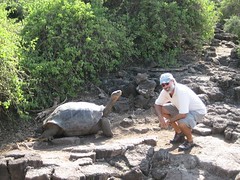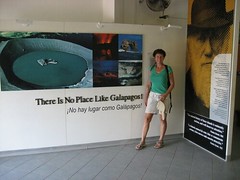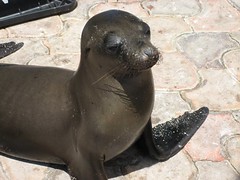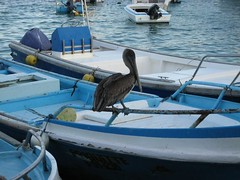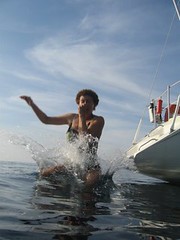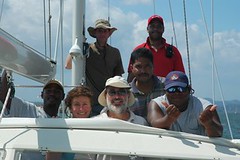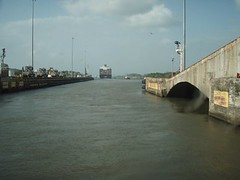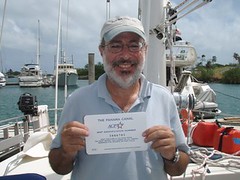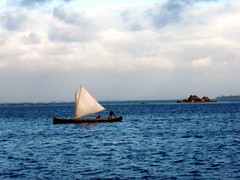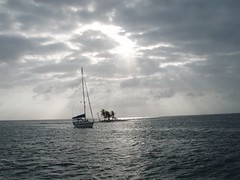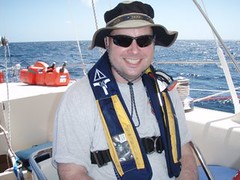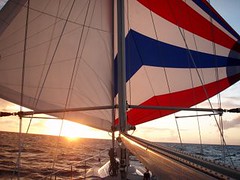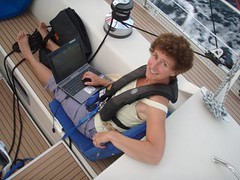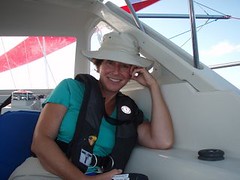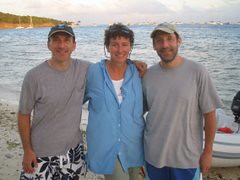Time: 23:00 UTC. Position :9.05 south, 120.46 west, heading 244
degrees at 6 knots.
We have not had another stormy day,but continue to have a lot of
swells which make the boat rock from side to side. The swells
are rolling in from the south, and we are heading west
south-west ( mostly west), so they hit us at an angle that makes
it, well, rolly. It is not terrible, just not the smooth,
effortless sail we were expecting. Apparently the sailing
conditions can differ by just very small distances depending
where on this huge ocean you are en route to the Marquesas- I
mean we have friends on boats just a hundred miles away who are
having strong winds, but smooth, flat seas. Other people, 100
miles away in another direction seem to having worse swells than
us. Since the conditions are constantly changing it is hard to
know what to do, except just to keepdownloading weather reports
and hoping that each day ( or hour) brings about the changes
that we are looking for. Today it seems to be pretty good. It
is amazing how used to it we have gotten – I mean we can read
and we can write e-mails- something I am sure we could not do
under these condtions a few months ago. We have a fun
relationship going on with another boat – Intiaq- with Karin and
Jean-Francois on board. They are a French/Swiss couple –
handsome, articulate, friendly a little older than us. They
have a big catamaran, a 47 foot Catana. A 47 foot Catana is way
bigger than a 52 foot Amel, by the way, because they are about
25 feet wide, whereas we are only 15 feet. Makes them a very
comfortable and roomy boat. Catamarans handle swells much better
than monohulls like us because of the broad footprint they have
on the water – makes them very smooth. Anyways, we met Intiaq
in the Galapagos and left from the same harbour in Isla Isabela
at about the same time on April 11th. We were in radio contact
with them for the first few days, but then they pulled too far
ahead of us to get reception. The other way to communicate with
other boats at sea is by SSB ( single side band radio). Intiaq
had set up an arrangement with a few other boats ( all French
speaking) to check in with each other twice a day – just to
report positions and to make sure no-one is in trouble. There is
something wrong with our SSB radio so we can hear them everyday,
but can not transmit to talk to them. Since we are in e-mail
contact with them as well, I wrote Karin and told her our
dilemna. So now, every day, after their standard SSB check-in
with the other boats – which I listen in to – Karin gets on the
radio and just has a one way conversation with me – telling me
the days news – how many fish they have caught ( many), what
they have seen ( a bird), how the weather is, what great food
she she prepared on board, etc. It is really nice. Then I will
e-mail her back some news from Sabbatical III. It is very
comforting to have another boat to talk to like this. There are
at least 25 other boats en route to the Marquesas who also share
contact information on the radio via SSB. We are able to keep
track of lots of other boats – some of them we recognize from
seeing them from other harbours even if we have not yet met the
folks on board. We know of three boats who are sailing
single-handed – one Turk, one Canadian and one Austrian who are
crossing as we do. Can’t imagine how they do it – it is a very
very long journey – and even with two people it is hard to rest
enough. I guess they must just close their eyes, cross their
fingers and go to sleep on and off during the day. We have not
actually seen another boat for 12 days now – but expect that as
we all converge on the same island in the Marquesas we will
start seeing other boats. That will be fun.

